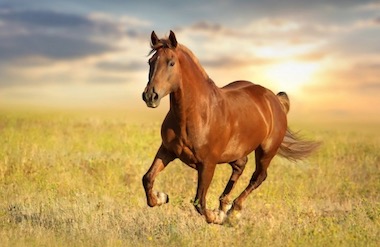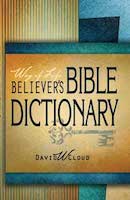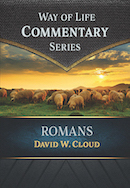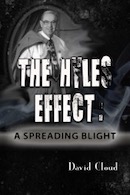866-295-4143, fbns@wayoflife.org

Humans have been interacting with horses since creation. They are used for transportation, work, sport, pleasure, meat (eaten by the French), milk, leather, pharmaceuticals, and other things.
Historically, horses were used extensively in warfare. During World War II, an estimated 6 million horses were employed. Even in the age of mechanization, horses are still widely used in agriculture and police work.
The lifestyle of many groups of people was inseparable from the horse. These include Arabian nomads and some North America Indian tribes beginning in the 16th century.
In fact, man’s use of the horse is so extensive that there is a vast specialized vocabulary for describing everything from its anatomy and behavior to its color and markings. An extensive variety of riding styles, driving techniques, and equipment have been developed.
There are more than 300 breeds of horses today.
They are loosely divided into three categories based on general temperament: “spirited HOT BLOODS with speed and endurance; COLD BLOODS, such as draft horses and some ponies, suitable for slow, heavy work; and WARMBLOODS, developed from crosses between hot bloods and cold bloods, often focusing on creating breeds for specific riding purposes, particularly in Europe” (“Horse,” Wikipedia).
The most popular breeds of horses are the following:
Arabian: It gets its name from the Arabian Peninsula. Known for its endurance, the Arabian is capable of running over 100 miles without rest.
Quarter horse: The American quarter horse is the world’s most popular breed; it is the fastest horse over short distances; it is the “cowboy horse,” used for roping and cutting, barrel racing, and hunting.
Thoroughbred: A high spirited horse used for racing, hunting, and jumping, among other things.
Tennessee Walker: A horse developed in the Southern United States in the 18th century for use on farms and plantations. It was widely used by Civil War officers because of its endurance and smooth gait that makes it comfortable for riding long distances. Robert E. Lee’s Traveler was part Tennessee Walker.
Morgan: The Morgan was developed in the United States as an all-around saddle/stock horse for farming and ranching, harness racing, and pulling carriages. They are still used widely in rodeo work.
Paint: This is a combination of the conformation of a western stock horse and the colors of a pinto.
Appaloosa: It was developed by the Nez Perce Native American Indians. “They are tough, independent, hardy and sure-footed.”
Miniature Horse: Developed in Europe in the 1600s, the miniature horse must be under 38 inches.
Andalusian: A Spanish breed developed in the 15th century, it was used as a war horse. Most of them are grey or bay.
The draft horse is a large, powerful horse bred for heavy work. It is also called a draught horse or a dray, from the old English dragan meaning “to draw or haul.” The Shire, bred in England, is one of the largest draft horse breeds. It can be traced to the 12th century and was known as the English Great Horse. Before the age of gun power in Europe, the great horse was popular with knights because of its great strength and bulk. At a 1924 British exhibition, a pair of Shires pulled a load equal to 45 tons. The Belgian, called the Belgian Heavy Horse, was bred in the Brabant region of Belgium. On average, it stands between 16.2 and 17 hands and weighs over 2,000 pounds (900 k). The world’s largest was Brooklyn Supreme, weighing 3,200 pounds and standing 19.2 hands (78 inches). The Percheron is a smaller French-bred heavy horse that averages from 15.1 to 18.1 hands and weighs from 1,100 to 2,600 pounds. They are intelligent, willing workers, have good dispositions, and are adaptable to many conditions. They were used by armored knights for their power, size, and stamina, being able to travel 37 miles in a day at a trot.
Clydesdale is a large draft horse bred in Scotland and used for heavy work. Because of its wide use in Australia, it was called “the breed that built Australia.”
The horse’s normal life expectancy is 25-30 years. The oldest on record was “Old Billy,” which lived to the age of 62 (died in 1822). More recently the pony Sugar Puff died in 2007 at age 56.
Horses of various ages are called by the following terms:
Colt: A male horse under the age of four
Filly: A female horse under the age of four
Foal: A horse of either sex less than one year
Yearling: A horse of either sex that is between one and two years old
Mare: A female horse four years or older
Stallion: A non-castrated male horse four years or older
Gelding: A castrated male horse
The height of a horse is measured at the highest point of the withers, where the neck meets the back. It is measured in units of hands and inches. One hand is equal to 4 inches. For example, 14.2 is 14 hands and 2 inches or 58 inches. A pony is a horse that is less than 14.2 hands high.
The largest horse on record was a Shire named Sampson (also known as Mammoth) that stood 21.2 hands (86 inches) and weighed 3,360 pounds (1,524k).
The smallest horse on record was Einstein, a 14-inch tall pony.
Horses come in a wide variety of colors and markings, such as the following:
Black
Bay (dark brown)
Chestnut (sorrel)
Grey (they usually get lighter with age; most white horses are actually light grey)
The horse’s speed (gait) is divided into the following major categories:
Walk
Trot
Pace
Canter
Gallop
When a horse is galloping, all four hooves are off the ground at one point. This was proposed in 1872 by Leland Stanford, and it was proven to be correct by Eudweard Muybridge, who used an array of 24 cameras to photograph a racehorse named Sallie Gardner.
The fastest horse on record could run 55 miles per hour (88 kph). The longest jump over water was by Something, which jumped 27 feet 6 inches. The highest jump was made by Huaso, which jumped 8 feet 1 inch.
The horse has keen senses. Its eyes are the largest of any land mammal. It has a range of vision of 350 degrees and excellent night vision. A horse can look at two different things at one time, and its ears will point in those different directions. The horse’s sense of smell is aided by two olfactory systems, one in the nostrils and one under the nasal cavity. These organs have separate nerve pathways to the brain to analyze different kinds of smells, including pheromones (chemicals excreted by animals and insects to trigger social responses). The horse’s hearing is very keen. It can detect sounds as far as 2.5 miles (4 km). Its hearing covers a wider range of frequency than a human’s (14 Hz to 25 kHz vs 20 Hz to 20 kHz). Its outer ears (the pinnas) are capable of rotating 180 degrees for isolating sounds and sensing direction. The conical shape of the pinna acts to capture sound as well as to shield the sound from other noises. They can also pick up low frequency vibrations through their hooves and teeth.
Some other interesting facts about horses:
The underside of a horse’s hoof has a triangular shaped area called the “frog,” a brilliantly-designed organ that acts as a shock absorber as well as helping to pump blood back up the leg.
The horse’s brain is about half the size of a human’s, but its heart is about 10 times the size of a human’s. A human heart weighs about 11 ounces and is the size of a clenched fist, whereas the horse’s weighs 9 to 10 pounds and is the size of a basketball.
The horse is a social creature that typically lives in herds of 3 to 20, usually led by a stallion. A single horse will get lonely.
Horses love sweets.
A horse’s teeth are a good indicator of its age. The saying, “Never look a gift horse in the mouth” means don’t carefully examine a gift.
The horse’s memory might be even better than that of an elephant.
Horses love water and will drink a minimum of 25 gallons per day. It will eat 1 to 2 percent of its body weight every day.
When a horse looks like it is laughing, it is actually engaged in a technique to enhance their smelling.
One horse can produce 15 to 30 pounds of manure daily. “In 1900, there were 15,000 horses in New York City. They produced enough manure in one year to create a pile 175 feet high, covering an acre of land, and breeding 16 billion flies” (Joel Tarr, “Urban Pollution,” American Heritage Magazine, Oct. 1971).
Horses can sleep both standing up and lying down. When standing, it locks its leg joints. If they are in a group, at least one horse will stay awake as as a lookout.
Horses can breed with zebras and the product is called a zebroid. A cross between a zebra and a pony is a zony.
The Horse in the Bible
The horse is mentioned 213 times in the Bible.
The first mention is in Egypt during Joseph’s reign (Ge. 47:17).
The Bible speaks of the horse’s strength and bravery (Job 39:19-25; Jer. 47:3), stubbornness (Ps. 32:9; Pr. 26:3), ability to find its way through a wilderness (Isa. 63:13), stamina (Jer. 12:5), swiftness (Jer. 4:13; Hab. 1:8), ferocity (Hab. 1:8), even the stallion’s passion for the mare (Jer. 5:8).
The horse is often mentioned in the context of war. The Bible describes vast armies with massive numbers of horses and chariots, beginning with Pharaoh’s horsemen (Ex. 14:9). Joshua defeated a coalition of Canaanites “with horses and chariots very much” (Jos. 11:3-4). David defeated an army of 20,000 that was accompanied by 1,000 chariots and 700 horsemen near the river Euphrates (2 Sa. 8:3-4).
The Bible describes horse warfare in dramatic terms. It mentions the snorting (Jer. 8:16), the stamping of the hooves (Jer. 47:3), the rushing into the battle (Jer. 8:6), the dust (Eze. 26:10), the pransing (Na. 3:2).
Israel’s kings were forbidden by the law of Moses to multiply horses, which is a reference to war horses from Egypt (De. 17:16). This was intended to keep Israel from trusting in horses and chariots like other nations. Compare Ps. 20:7; 33:17; Isa. 31:1. In disobedience to God’s command, Solomon had 40,000 stalls of horses for his chariots and 12,000 horsemen (1 Ki. 4:26).
One of the gates of Jerusalem was named the horse gate (Ne. 3:28).
The Assyrian horsemen were clothed with blue (Eze. 23:6).
Horses will be used in end-time battles. Gog and Magog will ride horses (Eze. 38:4, 15; 39:20), and horses will be at the battle of Armageddon (Hag. 2:22; Zec. 12:4; Re. 14:20; 19:18-19).
The opening judgments of the Tribulation are described under the metaphor of horses (Rev. 6:2, 4, 5, 8).
Horses are mentioned in connection with Christ’s kingdom. Converted Jews will be brought to Israel on horses (Isa. 66:20). Kings and princes will enter the gates of Jerusalem on horses (Jer. 17:25).
There are heavenly horses that are more amazing than the earthly horses. Elijah was taken to heaven in a chariot of fire, and horses of fire (2 Ki. 2:11), and Elisha saw horses and chariots of fire in the mountains around Dothan (2 Ki. 6:17). Christ will come from heaven on a white horse accompanied by the armies of heaven on white horses (Re. 19:11, 14).
Famous War Horses
There have been many famous war horses in history.
Alexander the Great’s Bucephalus
Alexander’s is is one the earliest horses in history whose name is known. When only 12 years old, Alexander tamed the exceptionally difficult black stallion. He rode the war horse in battles throughout most of his career, spanning from Macedonia to India. It is said that Bucephalus died of old age during the battles in the Punjab and that Alexander named a city in its honor.
Napoleon’s Marengo
Napoleon was the French ruler who conquered much of Europe in the late 18th century. Marengo was a gray Arabian imported from Egypt. He was small but strong, dependable, and courageous. He could travel 80 miles in five hours. Marengo was wounded eight times in battles.
The Duke of Wellington’s Copenhagen
The Duke of Wellington was the British military leader who defeated Napoleon at the Battle of Waterloo in 1815. Copenhagen was a brown horse that stood 15 hands high (60 inches) and was very muscular. He was three quarter Thoroughbred and one-quarter Arabian. He had the habit of lying down when he ate his corn. Before he was owned by the Duke, he was a race horse. He was the fastest horse, but he had great endurance which is essential for a war horse. The Duke rode him for 17 hours during the Battle of Waterloo. He was retired to a farm and lived to the age of 28. He loved visitors and especially liked chocolate cream sweets.
Robert E. Lee’s Traveller
Robert E. Lee was the general of the southern armies in America’s Civil War in the 19th century. His horse Traveller was an American Saddlebred, 16 hands high (64 inches). Lee purchased Traveller for $200, which would be equivalent to about $5000 today. He was difficult to control, nervous and spirited, but Lee loved him for his strength, endurance, and courage.
Traveller was always ready to travel. Lee often rode him over 40 miles in a day. He was full of energy and loved to prance and jig rather than walk. He wanted to be in the front of every battle.
Robert E. Lee rode Traveller from 1862 until the end of the war in 1865. Traveller died soon after the death of Lee in 1871.
Ulysses Grant’s Cincinnati
Cincinnati was the son of Lexington, the fastest four-mile thoroughbred horse in America at that time. He was 17 hands high (68 inches).
- Receive these reports by email
- www.wayoflife.org
______________________
Sharing Policy: Much of our material is available for free, such as the hundreds of articles at the Way of Life web site. Other items we sell to help fund our expensive literature and foreign church planting ministries. Way of Life's content falls into two categories: sharable and non-sharable. Things that we encourage you to share include the audio sermons, O Timothy magazine, FBIS articles, and the free eVideos and free eBooks. You are welcome to make copies of these at your own expense and share them with friends and family. You may also post parts of reports and/or entire reports to websites, blogs, etc as long as you give proper credit (citation). A link to the original report is very much appreciated as the reports are frequently updated and/or expanded. Things we do not want copied and distributed are "Store" items like the Fundamental Baptist Digital Library, print editions of our books, electronic editions of the books that we sell, the videos that we sell, etc. The items have taken years to produce at enormous expense in time and money, and we use the income from sales to help fund the ministry. We trust that your Christian honesty will preserve the integrity of this policy. "For the scripture saith, Thou shalt not muzzle the ox that treadeth out the corn. And, The labourer is worthy of his reward" (1 Timothy 5:18). Questions? support@wayoflife.org
Goal:Distributed by Way of Life Literature Inc., the Fundamental Baptist Information Service is an e-mail posting for Bible-believing Christians. Established in 1974, Way of Life Literature is a fundamental Baptist preaching and publishing ministry based in Bethel Baptist Church, London, Ontario, of which Wilbert Unger is the founding Pastor. Brother Cloud lives in South Asia where he has been a church planting missionary since 1979. Our primary goal with the FBIS is to provide material to assist preachers in the edification and protection of the churches.
Offering: Offerings are welcome if you care to make one. If you have been helped and/or blessed by our material offerings can be mailed or made online with with Visa, Mastercard, Discover, or Paypal. For information see: www.wayoflife.org/about/makeanoffering.html.





